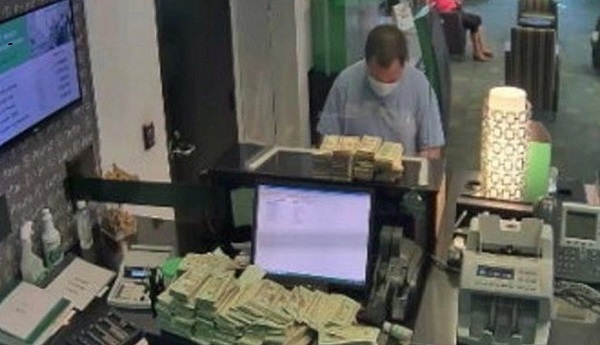COVID-19
The Vials and the Damage Done: Canada’s National Microbiology Laboratory Scandal, Part II
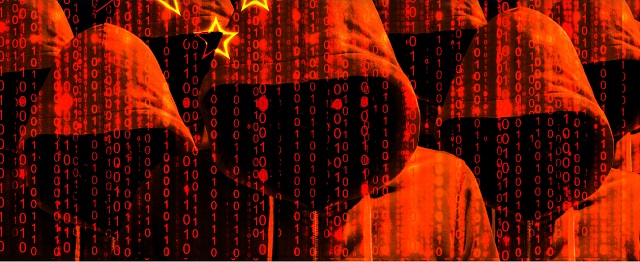
From the C2C Journal
By Peter Shawn Taylor
In China, minor security infractions are routinely punished with lengthy jail terms in dreadful conditions. In Canada, it’s just the opposite. Clear evidence of espionage is rewarded with a free pass back home after the mission is complete. Neglecting our national security in this way may suit the Justin Trudeau government, but it is doing great harm to Canada’s relationship with its most important allies. In the concluding instalment of his two-part series, Peter Shawn Taylor examines the many ways in which the spy scandal at the National Microbiology Laboratory in Winnipeg has damaged Canada’s international standing and contributed to the growing perception that Canada is a foreign agent’s happy place. (Part I is here.)
The Scientists Who Came in From the Cold: Canada’s National Microbiology Laboratory Scandal, Part I
COVID-19
Massive new study links COVID jabs to higher risk of myocarditis, stroke, artery disease

From LifeSiteNews
A new meta-analysis covering 85 million people found more evidence linking the COVID-19 vaccines to stroke, coronary artery disease, myocardial infarction, and arrhythmia.
A new meta-analysis covering 85 million people has found more evidence linking the COVID-19 vaccines to serious medical harms, although the authors appear to downplay the significance of their own findings in what one analyst calls the price of publication.
The study, published in the International Journal of Preventive Medicine, analyzes the findings of 15 previous studies covering almost 46 million vaccinated individuals and 40 unvaccinated ones. The effects overwhelmingly concern the Pfizer and AstraZeneca shots.
“Bayesian meta-analysis revealed a link between vaccines and CAD risk (OR, 1.70; 95% CrI: 1.11-2.57), particularly after BNT162b2 (OR, 1.64; 95% CrI: 1.06-2.55) and second dose (OR, 3.44; 95% CrI: 1.99-5.98),” the paper summarizes. “No increased risk of heart attack, arrhythmia, or stroke was observed post-COVID-19 vaccination. As the only noteworthy point, a protective effect on stroke (OR, 0.19; 95% CrI: 0.10-0.39) and myocardial infarction (OR, 0.003; 95% CrI: 0.001-0.006) was observed after the third dose of the vaccine.”
However, digging into the study’s actual data reveals a 70% increased overall risk of coronary artery disease (CAD); a 286% increased risk of myocardial infarction (MI) after second doses; a 240% increased risk of stroke after a first dose; and a 199% increased risk of arrhythmia after a first dose.
The authors conclude that the “association of COVID-19 vaccination with the risk of coronary artery disease should be considered in future vaccine technologies for the next pandemic,” but curiously argue that “(w)hile acknowledging potential side effects, our findings support the overall safety of the COVID-19 vaccine concerning cardiovascular complications such as myocardial infarction, stroke, and arrhythmia.”
Commenting on the study, McCullough Foundation epidemiologist Nicolas Hulscher argued that the discrepancy between the “actual data” and “how the authors spin it for publication” was to be expected, as “most will say anything to get the paper published” given the pervading biases among the medical establishment.
The data adds to a significant body of evidence behind ambivalence to the COVID-19 vaccines.
The federal Vaccine Adverse Event Reporting System (VAERS) reports 38,541 deaths, 220,494 hospitalizations, 22,247 heart attacks, and 28,908 myocarditis and pericarditis cases as of March 28, among other ailments. U.S. Centers for Disease Control & Prevention (CDC) researchers have recognized a “high verification rate of reports of myocarditis to VAERS after mRNA-based COVID-19 vaccination,” leading to the conclusion that “under-reporting is more likely” than over-reporting.
An analysis of 99 million people across eight countries published in the journal Vaccine “observed significantly higher risks of myocarditis following the first, second and third doses” of mRNA-based COVID vaccines, as well as signs of increased risk of “pericarditis, Guillain-Barré syndrome, and cerebral venous sinus thrombosis,” and other “potential safety signals that require further investigation.” In April 2024, the CDC was forced to release by court order 780,000 previously undisclosed reports of serious adverse reactions, and a study out of Japan found “statistically significant increases” in cancer deaths after third doses of mRNA-based COVID-19 vaccines, and offered several theories for a causal link.
In January, a long-awaited Florida grand jury report on the COVID vaccine manufacturers found that while only a miniscule percentage of the millions of vaccinations resulted in serious harm based on the data it had access to, such events do occur, and there are “profound and serious issues” in pharmaceutical companies’ review process, including reluctance to share what evidence of adverse events they did find.
All eyes are currently on President Donald Trump and his health team, helmed by Robert F. Kennedy Jr. as Secretary of Health and Human Services. As one of the country’s most vocal critics of the COVID establishment and vaccines more generally, his nomination brought hope that the second Trump administration will take a critical reassessment of the shots that the returning president has previously embraced, although most of Kennedy’s comments since joining Trump have focused on other issues, such as conventional vaccines and harmful food additives, and during confirmation hearings he called Operation Warp Speed an “extraordinary accomplishment.”
Trump has given mixed signals as to the prospects of reconsidering the shots and has nominated both critics and defenders of establishment COVID measures for a number of administration roles.
Censorship Industrial Complex
Scott Atlas: COVID lockdowns, censorship have left a ‘permanent black mark on America’
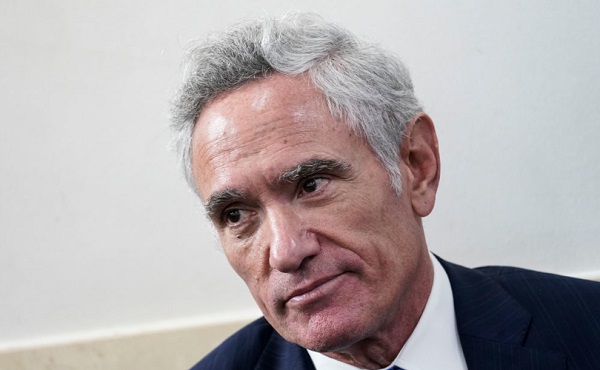
From LifeSiteNews
Editor’s note: The following text is taken from a speech delivered by radiologist and political commentator Scott Atlas to the Independent Medical Alliance conference in Atlanta, Georgia, on April 5, 2025. Transcription provided by Dr. Robert Malone.
ATLANTA (Robert Malone) — First, thank you to the organizers, and to my many friends and supporters here. It’s great to be here – surrounded by people who believe in personal freedom!
At the recent international Alliance for Responsible Citizenship (ARC) forum in London, I was invited to address the question, “Can Institutions be Reformed?” Begun with Jordan Peterson, ARC joins voices from all over the world to discuss how to refresh the institutions and best values of Western heritage, values that provided the world with history’s most successful societies, particularly the commitment to freedom.
I asked that audience to first consider:
Why, at this moment in history, are we finally focusing on how institutions should be reformed, or if institutions can even be reformed?
After all, for decades we have been aware that our institutions were failing – editorialized, dishonest journalism; wasteful, corrupt government; and agenda-driven schools and universities increasingly unbalanced toward the left, with many conservative faculty and students often self-censoring, afraid to offer unpopular views.
The answer? It is COVID, the pandemic mismanagement specifically – the most tragic breakdown of leadership and ethics that free societies have seen in our lifetimes.
COVID fully exposed the massive, across-the-board, institutional failure – including the shocking reality of overt censorship in our country, the loss of freedoms and the frank violation of human rights – in this country, one explicitly founded on a commitment to freedom.
Yet, oddly, the pandemic remained invisible at the ARC conference, unmentioned by dozens of speakers addressing freedom. It was the elephant in the room – just as explaining the truth about lockdowns, the pseudoscience mandates on masks and social distancing, closing churches and businesses, prohibiting visits to elderly parents in nursing homes while they die – all are missing from post-election discussions today in the United States, including, notably, any of the very public statements and proclamations from the new administration about health care today.
Today, in the wake of COVID, we are left with an undeniable crisis in health. Trust in health guidance has plummeted more rapidly since 2019 than any other government institution, with almost two-thirds now rating the FDA and the CDC as “only fair or poor.”
Half of America no longer has much confidence in science itself. Trust in our doctors and hospitals dropped from 71 percent in 2019 to 40 percent in 2024. The loss of trust is part of the disgraceful legacy of those who held power, who were relied upon to use critical thinking and an ethical compass on behalf of the public, who were handed the precious gift of automatic credibility and almost blind trust.
To understand how to move forward to restore trust, it’s important to first acknowledge basic facts about the pandemic, and keep repeating them, because truth serves as the starting point of all rational discussion. And we must live in a society where facts are acknowledged.
Remember – lockdowns were not caused by the virus. Human beings decided to impose lockdowns.
Indeed, lockdowns were widely instituted, they failed to stop the dying, and they failed to stop the spread – that’s the data: Bjornskov, 2021; Bendavid, 2021; Agarwal, 2021; Herby, 2022; Kerpen, 2023; Ioannidis, 2024; Atlas, 2024.
Lockdowners ignored Henderson’s classic review 15 years earlier showing lockdowns were both ineffective and extremely harmful. They rejected the alternative, targeted protection, first recommended on national media in March 2020 independently by Ioannidis, by Katz, and by me (Atlas) – and then repeatedly for months – based on data already known back then, in spring of 2020. It was not learned 7 months later in 2020, when the Great Barrington Declaration reiterated it, or in 2021, or 2022, or more recently.
And the Birx-Fauci lockdowns directly inflicted massive damage on children and literally killed millions, especially, sinfully, the poor. “The U.S. alone would have had 1.6 million fewer deaths (through July 2023) if it had the performance of Sweden,” according to a review of 34 countries. Bianchi calculates that over the next 15-20 years, the unemployment alone will cause another million additional American deaths – from the economic shutdown, not the virus.
Beyond a reckless disregard for foreseeable death from their policies, America’s leaders imposed sinful harms and long-lasting damage on our children, the totality of which may not be realized for decades. Mandatory school closings, forced isolation of teens and college students, and required injections of healthy children with experimental drugs attempting to shield adults will be a permanent black mark on America.
It is also worth remembering that this was a health policy problem.
While credentials are not the sole determinant of expertise, I was the only health policy scholar on the White House Task Force and advising the president. Virology is not health policy; epidemiology is not health policy. And while physicians are important in contributing, they are not inherently expert in health policy. Those are only pieces of a larger, more complex puzzle. The stunning fact is – I was the only medical expert there focused on stopping both the death and destruction from the virus and the death and destruction from the policy itself.
As Hannah Arendt observed in “Eichmann in Jerusalem”:
What has come to light is neither nihilism nor cynicism, as one might have expected, but a quite extraordinary confusion over elementary questions of morality.
More than massive incompetence, more than a fundamental lack of critical thinking, we saw the disappearance of society’s moral compass, so pervasive that we have rightfully lost trust in our institutions, leaders, and fellow citizens, trust that is essential to the function of any free and diverse society.
Why did free people accept these draconian, unprecedented, and illogical lockdowns?
This is the question. And the answer reveals the reason for today’s silence on the pandemic.
Clearly, censorship and propaganda are key parts of the explanation, tools of control that convinced the public of two fallacies – that a consensus of experts on lockdowns existed, and dissenters to that false consensus were highly dangerous.
Censorship first was done by the media companies themselves – when it counted most:
- In 2020, before the Biden administration, when school closures and lockdowns were being implemented;
- May 2020, YouTube bragged about its “aggressive policies against misinformation”;
- August 2020, Facebook shamelessly admitted to the Washington Post it had already taken down 7 million posts on the pandemic;
- My interviews as advisor to the president were pulled down by YouTube on September 11, 2020, by Twitter blocking me on October 18, 2020.
You might think the public – in a free society – should know what the advisor to the president was saying?
And what was the response to truth at America’s universities, our centers for the free exchange of ideas, including Stanford, my employer?
Censorship: character assassination, intimidation, and to me, formal censure.
Why is censorship used? To shut someone up, yes; but more importantly, to deceive the public – to stop others from hearing, to convince a naïve public there is a “consensus on truth.”
Truth is not a team sport.
Truth is not determined by consensus, or by numbers of people who agree, or by titles. It is discovered by debate, proven by critical analysis of evidence. Arguments are won by data and logic, not by personal attack or censoring others.
I am proud to be an outlier – happily proven right when the inliers are so wrong – but Cancel Culture is effective because it stops others from speaking. I received hundreds of emails from doctors and scientists all over the country, including from Stanford, from other professors, and from inside the NIH, saying, “Keep talking, Scott, you’re 100 percent right, but we’re afraid for our families and our jobs.”
And indeed, no one at Stanford Medical School – not a single faculty member there – spoke publicly against their attack on me. Only Martin Kulldorff, then a Harvard epidemiologist, wrote in and publicly challenged the 98 signatories at Stanford to debate on whether I was correct or not (none accepted that challenge!).
But that alone doesn’t explain today’s silence about that extraordinary collapse. It is not simply “issue fatigue.”
It is also that so many smart people, including many claiming to support the new “disruptors,” bought into the irrational measures when it counted most, when our kids and particularly the poor were being destroyed in 2020, uncomfortable to discuss and admit, but far more fundamental than the Sars2 origin, or Fauci, or the vaccine. That acquiescence, that silence, that cowardice, and that failure to grasp reality are inconvenient truths that no one wants to admit.
Today, disruption is sorely needed, and many are basking in the resounding victory of history’s most disruptive politician, President Donald J. Trump.
As promised, his new administration is moving quickly, disrupting on several fronts: national security, energy, trade, justice, immigration, and perhaps most importantly with Elon Musk’s effort to eliminate government waste and fraud, and protect our money. After all, the government has no money – it’s all our money, taxpayers’ money!
In health care, important changes in the status quo have also begun, first with Elon Musk’s much needed DOGE, streamlining tens of thousands of Department of Health and Human Services (HHS) bureaucrats while exposing massive fraud and waste in programs like Medicaid.
And Secretary of HHS Bobby Kennedy has also provoked an important, new national dialogue with his “Make America Healthy Again” mantra focused on wholesome foods to achieve the goal everyone readily supports – good health for themselves and their children. And no doubt, ensuring safety of all drugs and eliminating corruption in pharma and the food industry are also crucial to health. I am a strong supporter of those ideas.
We also have two excellent appointments in health – my friends and colleagues, Marty Makary to FDA and Jay Bhattacharya to NIH. Both Marty and Jay are highly knowledgeable, have top training and expertise, and are committed to critical thinking, to legitimate science, and most importantly to free scientific debate.
But I am concerned that most are simultaneously eager to “turn the page” on the human rights violations, the censorship, the true “constitutional crisis” – no setting the record straight, no official recognition of facts, no accountability? The ultimate disruptor won, and his disruptor appointees will now be in charge – so all is well?
Silently turning the page on modern history’s most egregious societal failure would be extraordinarily harmful. Failure to issue official statements of truth by the new government health agency leaders about the pandemic management would prevent closure for the millions who lost loved ones and whose children suffered such harms. And it would completely eliminate all accountability. Remember, only public accountability will prevent recurrence, and accountability is necessary to restore trust in institutions, leadership, and among fellow citizens.
My second concern: the era of trusting experts based solely on credentials must be over. But will that backlash against the failed “expert class” usher in a different wave of false belief? We cannot forget that legitimate expertise is still legitimate; that known, solid medical science is still valid; that unfounded theories based on simple correlations are not scientifically sound.
And we do not want to inadvertently replicate the cancel culture that harmed so many, with another wave of demonizing anyone who doesn’t 100 percent support the new narratives. It’s already begun – that if you disagree with any of the incoming opinions, then you must be “bought by pharma!” Blind support is just as bad as blind opposition; critical thinking must prevail.
What reforms are needed now?
- The first step to restore trust is formal, official statements of truth on the COVID lockdowns, masks, and other pseudoscience mandates from new HHS, NIH, FDA, CDC, CMS leaders.
- We need to forbid – by law – all shutdowns and reset that the CDC and other health agencies are (only) advisory. They recommend; they give information – they don’t set laws. They don’t have the power to set mandates. And if our guaranteed freedoms are not always valid, especially during crises, then they are not guaranteed at all.
- We need to add term limits (5 years?) to all mid- and top-level health agency positions. We cannot continue the perverse incentives of career bureaucrats accruing personal power, like Anthony Fauci and Deborah Birx with their 30-plus years in government.
- All new heads of HHS, FDA, NIH, CDC, and CMS should be prohibited from post-government company board positions in health sectors they regulate for ~5 years. It’s unethical, an overt conflict-of-interest. Why hasn’t that been announced?
- We need to forbid drug royalty sharing by employees of the NIH, the FDA, and the CDC. $325 million of royalties were shared with pharma by those people over the 10 years prior to the pandemic. That’s a shocking conflict of interest.
- We should forbid all mandates forcing people to take drugs. First, the essence of all ethical medical practice is informed consent. And what kind of a “free country” requires you to inject a drug into your child or yourself? No – that’s antithetical to freedom. In public health, you give the information… you shouldn’t need to force anything legitimate, but you do need to prove the case.
- We need to require the immediate posting of discussions in all FDA, CDC, and NIH meetings. They work for us. What are they saying? We should know in real-time.
- We need accountability for all government funding. We have 15+ universities getting >$500M/year from NIH alone. The essence of research is free debate. If they’re thwarting that with intimidation, like faculty censures, why would they be entitled to U.S. taxpayers’ money?
More broadly, I and others are working on policies to ensure the free exchange of ideas – the essence of all legitimate science, the basis for the mission of education.
Ideological gatekeeping in public discourse has no place in free societies, especially in science and health.
Here’s the point – the solution to misinformation is more information. No one should be trusted to be the arbiter of truth.
Ultimately, most solutions come from individuals, and ultimately, it is individuals, not institutions, who will save freedom.
I fear we still have a disastrous void in courage in our society today.
To quote CS Lewis, “Courage is not simply one of the virtues, but the form of every virtue at the testing point.”
We cannot have a peaceful, free society if it’s filled with people who lack the courage to speak and act with certainty on Hannah Arendt’s “elementary questions of morality.”
Finally, to the young people here, never forget what GK Chesterton said:
Right is right, even if nobody does it. Wrong is wrong, even if everybody is wrong about it.
Reprinted with permission from Robert Malone.
-

 Business2 days ago
Business2 days agoTrump threatens additional 50% tariffs on China, urges ‘patience’
-
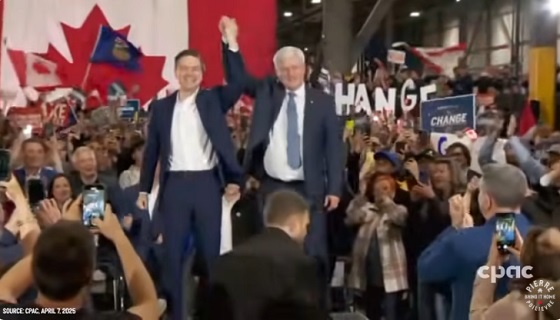
 2025 Federal Election17 hours ago
2025 Federal Election17 hours agoWATCH: Massive Crowd for Historic Edmonton Poilievre Rally
-

 Alberta2 days ago
Alberta2 days agoProvince introducing “Patient-Focused Funding Model” to fund acute care in Alberta
-
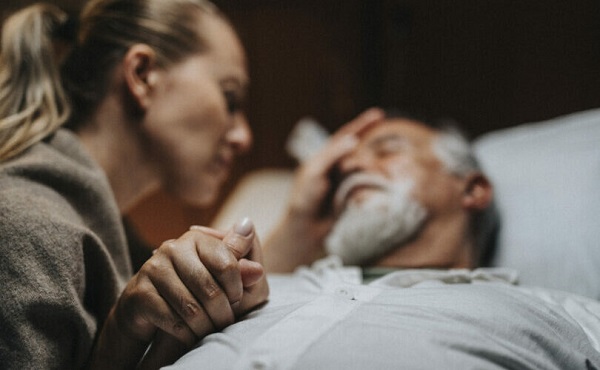
 International2 days ago
International2 days agoUN committee urges Canada to repeal euthanasia for non-terminally ill patients
-
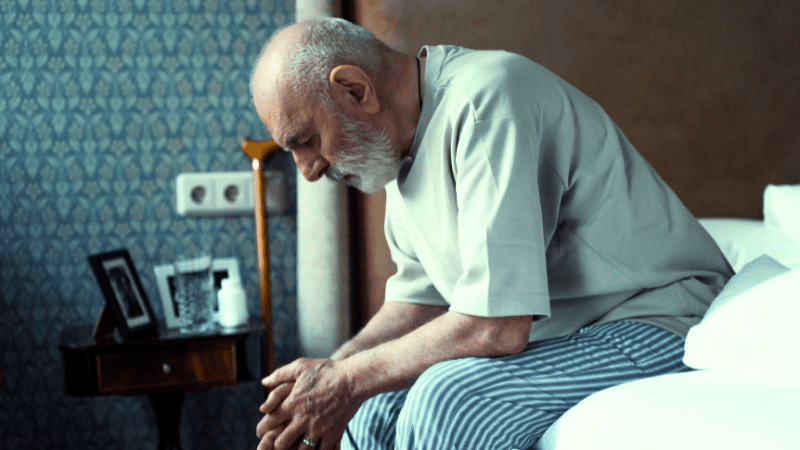
 MacDonald Laurier Institute2 days ago
MacDonald Laurier Institute2 days agoRushing to death in Canada’s MAiD regime
-
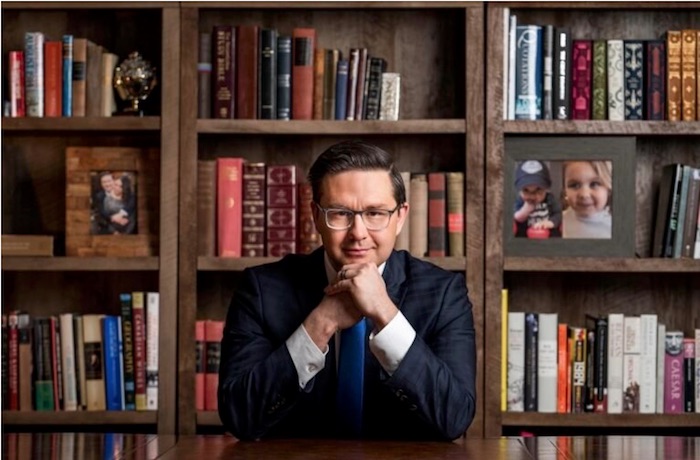
 2025 Federal Election18 hours ago
2025 Federal Election18 hours agoAn In-Depth Campaign Trail “Interview” With Pierre Poilievre
-

 2025 Federal Election2 days ago
2025 Federal Election2 days agoMark Carney Comes to B.C. and Delivers a Masterclass in Liberal Arrogance
-
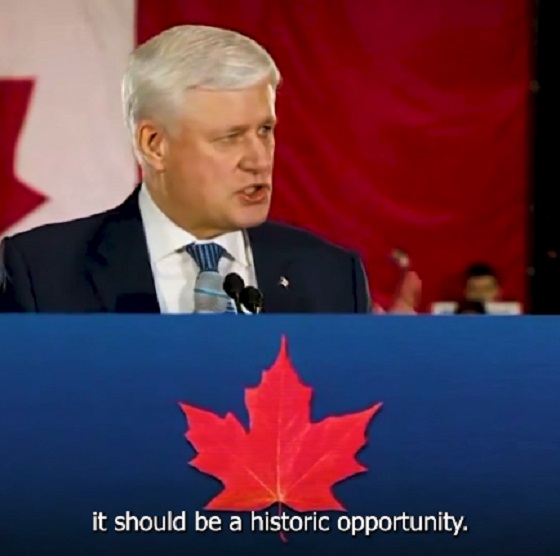
 2025 Federal Election17 hours ago
2025 Federal Election17 hours agoHarper Endorses Poilievre at Historic Edmonton Rally: “This Crisis Was Made in Canada”

 Prime Minister Justin Trudeau’s (top left) government fought hard to avoid disclosing classified documents concerning scientist couple Xiangguo Qiu and Keding Cheng (bottom left, left to right) – suspected of using their positions at Winnipeg’s top-security National Microbiology Laboratory (NML) (bottom right) to further the interests of Communist China. (Sources of photos: (top left)
Prime Minister Justin Trudeau’s (top left) government fought hard to avoid disclosing classified documents concerning scientist couple Xiangguo Qiu and Keding Cheng (bottom left, left to right) – suspected of using their positions at Winnipeg’s top-security National Microbiology Laboratory (NML) (bottom right) to further the interests of Communist China. (Sources of photos: (top left)  “Deeply embarrassing”: China expert and former diplomat Charles Burton says the long delay in releasing the declassified documents, along with a flurry of other China-related bills and hearings in Ottawa, speaks to the fact “the government has become very vulnerable on China.”
“Deeply embarrassing”: China expert and former diplomat Charles Burton says the long delay in releasing the declassified documents, along with a flurry of other China-related bills and hearings in Ottawa, speaks to the fact “the government has become very vulnerable on China.” The Liberals’ soft spot: Following Trudeau’s failed attempt to obtain a free trade deal with China – shown here meeting Chinese President Xi Jinping in Beijing, December 2017 – his government has repeatedly avoided confronting China on many significant issues related to Canada’s national security. (Source of photo: The Canadian Press/Sean Kilpatrick)
The Liberals’ soft spot: Following Trudeau’s failed attempt to obtain a free trade deal with China – shown here meeting Chinese President Xi Jinping in Beijing, December 2017 – his government has repeatedly avoided confronting China on many significant issues related to Canada’s national security. (Source of photo: The Canadian Press/Sean Kilpatrick) “Our worst fears”: According to national security expert Christian Leuprecht, the NML spy scandal is a significant blow to Canada’s international reputation; the revelation that Chinese agents penetrated Canada’s highest-security biohazard lab reinforces the belief that Canada is “the weak link” among Western allies.
“Our worst fears”: According to national security expert Christian Leuprecht, the NML spy scandal is a significant blow to Canada’s international reputation; the revelation that Chinese agents penetrated Canada’s highest-security biohazard lab reinforces the belief that Canada is “the weak link” among Western allies.
 Someone else dropped the ball: Phil Gurski, a former strategic analyst at the Canadian Security Intelligence Service (CSIS), says the agency did its job by quickly identifying Qiu and Cheng as possible security threats and informing its federal clients of this fact. Shown at left, CSIS national headquarters building in Ottawa. (Source of left photo: CSIS Canada/Facebook)
Someone else dropped the ball: Phil Gurski, a former strategic analyst at the Canadian Security Intelligence Service (CSIS), says the agency did its job by quickly identifying Qiu and Cheng as possible security threats and informing its federal clients of this fact. Shown at left, CSIS national headquarters building in Ottawa. (Source of left photo: CSIS Canada/Facebook) “Superstar scientist”: According to Leuprecht, Qiu’s international reputation could have blinded the NML to the concerns that she and her husband were secretly working on behalf of China. Shown, Qiu (at right) accepts a Governor General’s Innovation Award at Rideau Hall from Governor General Julie Payette in 2018. (Source of photo:
“Superstar scientist”: According to Leuprecht, Qiu’s international reputation could have blinded the NML to the concerns that she and her husband were secretly working on behalf of China. Shown, Qiu (at right) accepts a Governor General’s Innovation Award at Rideau Hall from Governor General Julie Payette in 2018. (Source of photo: 
 “An awfully long time”: Under questioning from Conservative MP Michael Chong (left) at an April meeting of the House of Common’s Canada-China Committee, Nathalie Drouin (right), national security intelligence advisor to the prime minister, reluctantly agreed it took far too long to fire Qiu and Cheng. (Source of screenshots:
“An awfully long time”: Under questioning from Conservative MP Michael Chong (left) at an April meeting of the House of Common’s Canada-China Committee, Nathalie Drouin (right), national security intelligence advisor to the prime minister, reluctantly agreed it took far too long to fire Qiu and Cheng. (Source of screenshots:  No pussy-footing around: The U.S. takes a firm approach towards potential Chinese espionage and frequently announces the prosecution of researchers and academics who have hidden their participation in China’s notorious Thousand Talents Program.
No pussy-footing around: The U.S. takes a firm approach towards potential Chinese espionage and frequently announces the prosecution of researchers and academics who have hidden their participation in China’s notorious Thousand Talents Program. First try: Electric-car battery expert Yuesheng Wang, a former Hydro-Québec employee, is the only person ever charged in Canada with economic espionage under the 2001 Security of Information Act. He is still awaiting trial. (Sources of photos: (left) Yuesheng Wang/LinkedIn; (right)
First try: Electric-car battery expert Yuesheng Wang, a former Hydro-Québec employee, is the only person ever charged in Canada with economic espionage under the 2001 Security of Information Act. He is still awaiting trial. (Sources of photos: (left) Yuesheng Wang/LinkedIn; (right)  An awkward relationship: Prosecuting spies in Canada is complicated by the fact CSIS refuses to disclose its sources and methods in court, while the RCMP, Canada’s national police service, lacks CSIS’s expertise in intelligence gathering. Shown, CSIS Director David Vigneault (left) and RCMP Commissioner Michael Duheme (right) at a parliamentary hearing in February 2024. (Source of photo: The Canadian Press/Justin Tang)
An awkward relationship: Prosecuting spies in Canada is complicated by the fact CSIS refuses to disclose its sources and methods in court, while the RCMP, Canada’s national police service, lacks CSIS’s expertise in intelligence gathering. Shown, CSIS Director David Vigneault (left) and RCMP Commissioner Michael Duheme (right) at a parliamentary hearing in February 2024. (Source of photo: The Canadian Press/Justin Tang) One final mission: According to the declassified documents, Qiu (shown at top working at the NML) was aware she was being watched by her employer when she sent 30 vials of Ebola and Henipah virus samples to China’s Wuhan Institute of Virology in March 2019 prior to having her security clearance revoked. Shown, the devastating effects of Ebola in Guinea (bottom left) and Henipah in India (bottom right). (Sources of photos: (top)
One final mission: According to the declassified documents, Qiu (shown at top working at the NML) was aware she was being watched by her employer when she sent 30 vials of Ebola and Henipah virus samples to China’s Wuhan Institute of Virology in March 2019 prior to having her security clearance revoked. Shown, the devastating effects of Ebola in Guinea (bottom left) and Henipah in India (bottom right). (Sources of photos: (top)  “Canada is a great place to go”: The fact Qiu and Cheng returned to China without any legal repercussions sends a clear message to other foreign agents, says Leuprecht. “We are not particularly vigilant, and if we do catch you, we will let you leave the country.” Shown, a still from the 1963 movie The Great Escape starring Steve McQueen; unlike Qiu and Cheng, McQueen’s character failed in his escape attempt.
“Canada is a great place to go”: The fact Qiu and Cheng returned to China without any legal repercussions sends a clear message to other foreign agents, says Leuprecht. “We are not particularly vigilant, and if we do catch you, we will let you leave the country.” Shown, a still from the 1963 movie The Great Escape starring Steve McQueen; unlike Qiu and Cheng, McQueen’s character failed in his escape attempt.



